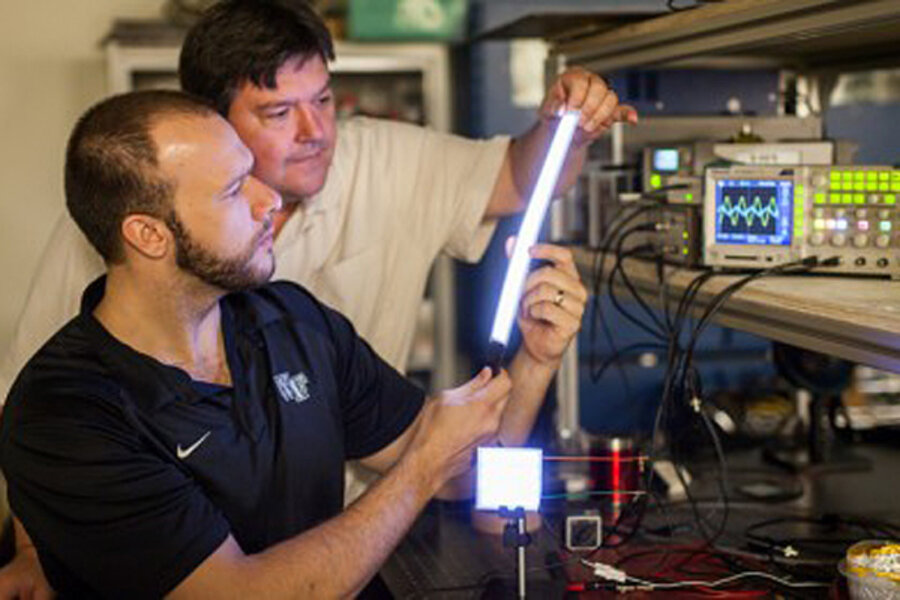New plastic lighting saves energy. Goodbye, fluorescent lights?
Move over flickering, fluorescent tubes. There's a new bulb in town.
Scientists at Wake Forest University in Winston-Salem, N.C., have designed a durable, plastic light that offers an efficient, buzz-free alternative to the mass lighting deplored by cubicle workers around the globe.
“People often complain that fluorescent lights bother their eyes, and the hum from the fluorescent tubes irritates anyone sitting at a desk underneath them,” David Carroll, the lead scientist behind the light's development, said in a statement. “The new lights we have created can cure both of those problems and more.”
The lighting uses layers of plastic packed with nanomaterials that glow when an electric current is introduced. It's called field-induced polymer electroluminescent (FIPEL) technology. Not only does it quietly project soft, white light, it's also shatterproof, low-temperature, and can be molded into almost any shape, the scientists say.
The light offers all of these features while being as energy efficient as today's most efficient lighting technologies, according to the developers.
“If you have a lighting source that does not create heat as a byproduct and can illuminate a space as well as or better than any other solution, think about how much it can lower costs – and environmental impact – in every office building,” Carroll said.
In 2010, residential and commercial lighting consumed about 499 billion kilowatt-hours of electricity – roughly 13 percent of total US electricity use, according to the US Energy Information Administration.
Light-emitting diodes, or LEDs, were first developed in the 1960s and save energy by emitting focused light in a specific direction. They are considered to be one of the most efficient lighting options.
In 2001, LEDs were present in 1.6 million lamps or installations, or less than 0.1 percent of the total installed base of lighting in the US, according to the US Department of Energy. Over the past 10 years, this number has grown 40-fold, but LEDs still only account for approximately 1 percent of the total installed base of lighting.
And there are drawbacks. LEDs are prone to overheat and the light they emit can have an undesirable bluish tint. Compact fluorescent lamps, or CFLs, another efficient alternative, but they contain trace amounts of mercury, which can pose an environmental hazard when broken or improperly disposed.
Carroll's moldable, durable glowing layers of plastic may one day surpass the limitations posed by today's efficient lighting options.
The technology still has to prove itself in the marketplace. Ken Garcia, president of PureLux Inc., the company Wake Forest founded to commercialize its lighting technology, has high hopes for the bendable light.
“The potential for real-world applications is fantastic,” he said in an October press release.
A corporate partner has expressed interest in manufacturing the technology, Carroll told the BBC, and he believes the first production runs will take place in 2013.





